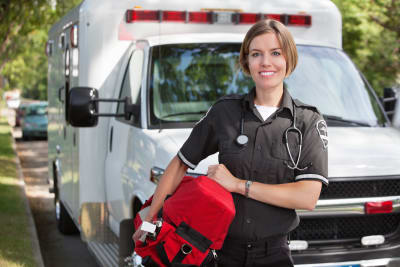Are you looking for a rewarding career in the healthcare industry that doesn’t take too long to study and train, like doctors and surgeons? Becoming a phlebotomist can be appealing if you want to carve out a stable and noble profession that allows your skills and personality to make a difference in people’s lives. Phlebotomists are friendly faces who help ease a patient’s nerves. They would usually explain the process before they perform their essential duty of safe blood extraction, whether routine or life-saving.
In this article, you will learn how practically anyone can pursue a career in phlebotomy with the proper education, diligence, and commitment to the highest healthcare standards.
What Phlebotomists Do
Phlebotomists’ main task is to collect patients’ blood in a clinical or mobile setting by puncturing the vein or pricking the finger. There are several purposes for this practice; one is for testing to check the presence of underlying conditions, if any. Such a task will aid the physician’s diagnosis and recommended treatment and care of the patient. Another everyday use of blood collection is for donation, for immediate or future use. Aside from this procedure, a phlebotomist will perform administrative and clerical work since ensuing actions concerning patient care will rely on the accuracy of the patient’s medical records.
Getting Started As A Phlebotomist
One of the main differences in getting into phlebotomy is its fewer entry prerequisites and shorter study and training periods compared to other allied health disciplines. If you are at least 18 years old and possess a minimum of two GCSEs or its equivalent, several employers will be willing to take you under their wing as a trainee phlebotomist, which allows you to skip a phlebotomy course. Otherwise, you are expected to complete a phlebotomy program first before employment.
Steps To Becoming A Phlebotomist
- Determine your aptitude for phlebotomy
Does the sight of blood bother you? That’s perhaps one of the things you need to ask yourself before embarking on a journey to becoming a phlebotomist. Although you may overcome this hurdle depending on your desire, it is a sensible question you must consider. A phlebotomist’s work revolves around this vital bodily fluid which you won’t be able to effectively perform if you get queasy by its presence in the first place.
One must have the right qualities to perform the job of a phlebotomist and, more importantly, excel at it. Aside from the high tolerance for blood handling, it would be best to have good hand-to-eye coordination. Since you are dealing with quite a delicate procedure, you should execute it successfully in a single attempt. There is no room for error; otherwise, you may compromise the patient’s trust and comfort.
When seriously considering this job, ensure your heart is right. Your compassion and concern are helpful for nervous patients in allaying their fears, whether real or imagined. Thus, finding the right balance of catering to individual needs while still carrying out the blood extraction procedure according to standards would be the primary goal of a good phlebotomist.
- Enroll in an accredited phlebotomy training school
You will find several phlebotomy schools within your area or locality, but not all have accreditation with the National Accrediting Agency for Clinical Laboratory Sciences, which future employers might require. An accredited school will also guarantee that you will learn the best phlebotomy practices that will be useful for many if not all, medical settings. Alternatively, you can complete your training online while making practical applications separately. With the latter, you need to find a clinical setting to have hands-on venipuncture training.
When applying for a phlebotomy program, you must submit your school records transcript, a recommendation letter from one of your teachers or former employer, and an application form. Most schools will also require you to write a short essay on why you want to become a phlebotomist.
While in the training program, you will gain more technical and didactic knowledge of biological processes and related medical procedures that will prepare you for your work as a phlebotomist. It usually takes several months to two years, depending on how many advanced skills you want to acquire. You are also expected to complete on-the-job training and classroom lessons. Moreover, you must accomplish at least 100 venipunctures on human subjects in a clinical setting.
- Obtain a national phlebotomy certification
Like most skilled professions, obtaining a certification provides an extra layer of competency and legitimacy to your credentials. It also indicates that you are committed to a high level of professionalism and standards, as well as continuously updating knowledge in your job. In the medical industry, you will encounter positions referred to as a certified phlebotomy technician; hence you must go to organizations such as the National Accrediting Agency for Clinical Laboratory Sciences and others that sponsor this certification.
In addition to being certified, some states like California, Washington, Louisiana, and Nevada require a license to practice your phlebotomist profession. It is usually paired with other skilled tasks, such as being a lab assistant or a medical technician. Consequently, depending on their type, you will have to renew your certification or license every two or three years.
- Gain field experience as a phlebotomist
How do you become a full-fledged phlebotomist? It’s time to use your newly acquired skills by landing a job in a medical or clinical facility. Now you can leverage your training, certification, or license when applying for a job as a phlebotomist. It should be easier since there is always a demand for this type of work, whether in a hospital, laboratory, or blood donation center. Once you gain footing, you can expand your knowledge and experience in this industry further, opening up even more growth opportunities sooner or later.




